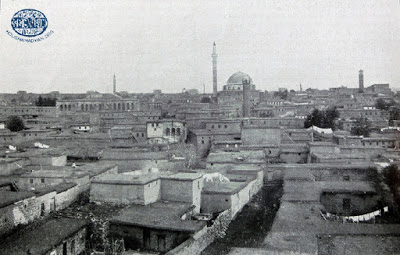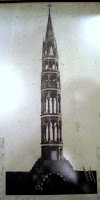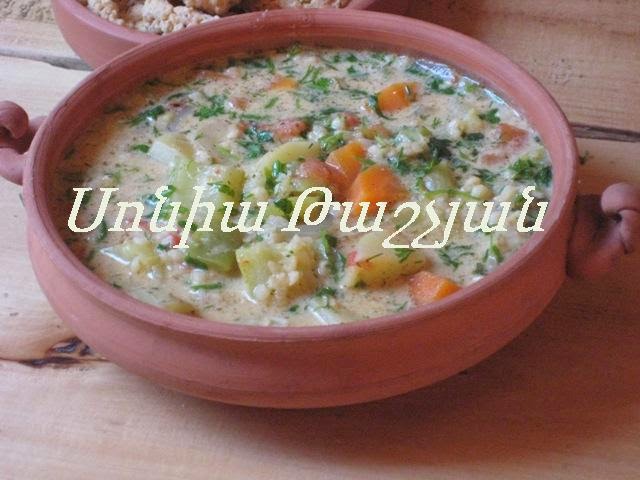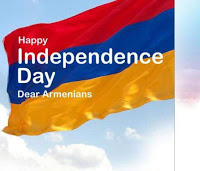We’ve all experienced a rush of emotion while eating foods
familiar from our childhood. For immigrants, especially those who escaped
misery, this experience can be profound. Food can obscure
our worst memories while evoking the best.
 |
| A view of Diyarbekir (Dikranagerd) – Source: Lamec Saad, “Zestien Jaar als Quarantaine-Artsin Turkije”, De Aarde en haar Volken, Haarlem, 1917). |
I learned this from observing my father, Nishan Kalajian, while I was growing up.
Dad was born in 1912 in the city Turks call Diyarbekir and Armenians call
Dikranagerd. He survived the first wave of Genocide but fled from renewed
terrors in 1922.
 |
| Beyli Baghli |
That meant our dinners in 1950’s New Jersey were often like a
journey to a far different place. We ate our share of
steak and pork chops, but our daily fare was more often beyli baghli,or douzma. Or moutfouna (see recipe below), or sud keebah.
 |
| Douzma |
 |
| Sud Keebah |
Does that sound familiar? Maybe some of it does, or maybe none at all.
many Armenian recipes morphed as they were carried across the mountains and
valleys of the homeland. But the foods of Dikranagerd not only sound different,
they taste different.
a bounty of seasonings and ingredients that made the local cuisine as
distinctive as the local dialect.
cook because she delivered a commentary in the language of her own
Dikranagertsi mother. None of this seemed exotic at the time because I heard
the same language and ate the same food in the homes of many relatives and
friends.
those wonderful people are gone. With our widening circle of Armenian friends
nowadays, dinner is more likely to feature hinkali or khachapouri
than yekhni (recipe below) or kavourma.
Robyn showed me a recent article on the foods of Dikranagerd by Sonia Tashjian.
Sonia, as our regular readers know, is one of Armenia’s most valuable culinary
resources, working tirelessly to explore, document and preserve the many facets
of Armenian cooking.
ongoing project to recreate the village life and culture of Armenians in the Ottoman
Empire. Reading her comments and recipes sent me on that long-ago journey once
again, recalling the ever-present scent of allspice and coriander in our family
kitchen while viewing photos from the rocky paths my father followed as a boy.
portrait of the Deriklian family, including my father’s aunt and cousins.
without noting the great troubadour, Onnik Dinkjian, who continues to celebrate everything about the Dikranagertsi life. Sonia offers a
sample of Onnik’s ode to the foods he loves, sung in the distinctive Dikranagertsi
dialect.
Mir mootfoonan boolghoorov
O yardele yardele
Mechuh sokh booghdoonoosov
O yardele yardele
sort of dinner was worth singing about. Reading Sonia’s story will help explain. If
you’re curious to know even more, check out Charles Kasbarian’s ‘The Dikranagerd Mystique Armenian Cookbook’ (in process).
find much to like no matter where you trace your family’s roots.
thick cubes
water
evaporates, and the meat is detached from the bones.
cups of water.
in a small vessel and let soak until eggplant is cooked.
the stockpot, discarding the seeds.
dipped in stew gravy.
Yekhni with Eggplants from Sonia Tashjian
Ingredients:
2 lbs. ground lamb or beef, 85% lean/15% fat
2 lbs. eggplant cut into 1-inch cubes
red and black pepper, to taste
allspice, to taste
salt, to taste
Directions:
Cook the meat in its own fat until no longer pink; do not drain. Add the spices, to taste. Add the eggplant cubes and a small amount of water. Cook until eggplant is tender.
Serve with sliced onions, chopped green peppers, and garnish with parsley.
Note: Yekhnis of green beans, squashes, and quince were prepared with the same ingredients following the same directions.




